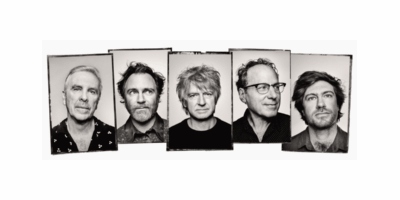On the surface, composing a song without vocals (if you’re a vocals-led act) sounds a straightforward task – there’s one less voice to worry about, in every sense of the word. Let’s take a look at nine instrumental tracks that do this.
But it takes a great deal of musical nous to make a piece of popular music listenable – let alone memorable – without the lead voice that anchors songs together in the minds of most people. Perhaps that’s why we’re more likely to remember instrumentals by legends – the Beatles, Bowie, The Smiths, The Beach Boys, Oasis and Fleetwood Mac – than those by lesser acts.
All the same, it’s worth looking at some of the stronger examples of vocal-less popular music to appreciate how much effort and thought the composers put into their music, so here are just a few sensational sans-singer songs.
‘Rumble’ by Link Wray
While censoring hit singles for mainstream radio isn’t uncommon, banning them altogether is – even more so when that song happens to have no words at all, let alone no rude words.
But that’s where we found ourselves in 1958, when this song by a country guitarist from Georgia was banned form radio play in the US for fear its tune – described by its first listeners as sounding “like a streetfight” – would incite gang violence.
What it incited was a musical revolution – that stately chord you hear Link strumming is of course a power chord: the first time the defining manoeuvre of rock and roll was ever played on record (though Chuck Berry got close). It’s likely John Lennon, Pete Townshend and the Kinks were listening given the music that was to follow.
Love Music?
Get your daily dose of metal, rock, indie, pop, and everything else in between.
‘Green Onions’ by Booker T and the MG’s
Two things make this sizzling 3-minute groove perhaps the most memorable instrumental of modern music. One is its name – for which a number of explanations exist.
But the main reason is Booker T’s hammond organ line, made instantly recognisable by its growling tone and swaggering rhythm – the latter apparently inspired by the way a cat walked – all counterbalanced by Steve Cropper’s razor-sharp guitar licks.
‘Misirlou’ by Dick Dale
The song that Pulp Fiction, The Black Eyed Peas and Guitar Hero 2 made famous began as a Greek Folk song back in 1919, with versions also recorded in Arabic and Yiddish.
Dales’ 1962 version of course added lightning-fast guitar strumming to the mix, making it one of the defining tracks of the surf movement along with the Surfari’s ‘Wipeout’, the Venture’s ‘Walk Don’t Run’ and most of the Beach Boy’s discography.

‘Frankenstein by’ The Edgar Winter Group
In 1972, Edgar winter managed to use the Keytar in a way that was neither tacky or tokenistic, on this Jazz-rock fusion track that is one of the few instrumentals to hit top spot on the Billboard hot 100.
‘YYZ’ by Rush
I don’t have scientific proof, but I’m pretty sure there’s a direct correlation between how listenable an instrumental is and how talented the musicians playing it are. Led Zeppelin’s ‘Moby Dick’ is one example – featuring as it does some of Jimmy Page’s most explosive licks and THAT John Bonham solo – but it was Canada’s greatest band that took this idea as far as it could go on their seminal 1981 album.
What starts as a basic rock track led by driving riffs and tight rhythms becomes a three-way duel for technical supremacy fought by each member on their respective instruments.
After drummer Neil Peart and bassist Geddy Lee have three turns each at strutting their stuff between he melody, guitarist Alex Lifeson unleashes a rapturous guitar solo reminiscent of a snake charmer’s Pungi, by when you’ve had your mind thoroughly blown by the skill of these three men.

‘Satch Boogie’ by Joe Satriani
The instrumental metal movement began with Eddie Van Halen with ‘Eruption’, and today persists in the form of G3 and associated shred-fests often involving Steve Vai, Steve Lukather and Yngwie Malmsteen.
But it was Satriani – whose students include Vai and Metallica’s Kirk Hammett – that arguably perfected the art form on his 1987 album Surfing with the Alien.
This track sees him fuse a strong melody full of sassy riffs with guitar tricks such as squealing pinched harmonics and whammy bar dive bombs, before launching a bridge of furious tapwork that sends the song into the cosmos.
‘Fuck This Shit’ by Belle And Sebastian
The Glasgow outfit’s track from 2002’s Storytelling is an exercise in how to ALMOST use words in songs (and bear with me, this is about to get technical).
The band employ’s “Prosody”, which is to use the rhythm of words without actually saying the words themselves – in this case ‘Fuck this shit” with the harmonica. Beyond the music theory, it’s also a joyful little tune.
‘Intro’ by The xx
“It’s as much about the notes that aren’t played than those that are” is an overused truism, but it’s relevant here: The space the London Indie-pop trio leave for the opening track on their 2009 debut LP makes it alluring and introspective to listen to, and it sounds far shorter than its seven minutes for the aural journey it takes you on.
Its edgy guitar refrain and mysterious synth pad have made it a lasting favourite with documentary makers, advertisers and awards show producers, to the point where you’ve probably heard this song before, even if you haven’t actively sought it out to listen to.
https://www.youtube.com/watch?v=N4feoj9Ygio
‘Ocean’ by John Butler
During live performances Butler regularly describes this 12-minute odyssey as an old friend he keeps visiting to reminisce with – a touching observation given it’s been part of his repertoire since his days busking on the streets of Fremantle in the late ‘90s, growing in length complexity as Butler’s own skills have evolved.
It’s no less significant or powerful in the studio, and like the titular body of water it rises and falls at will, sometimes dangerous, sometimes calm, but always beautiful.


































